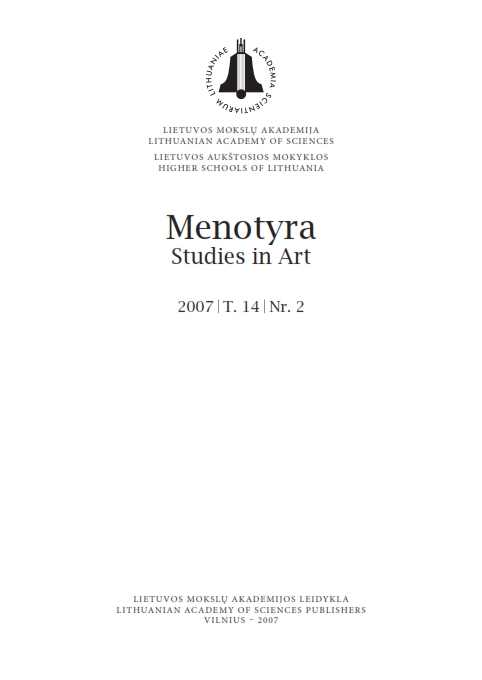Stiliaus varžtuose: tautinės tapatybės paieškos tarpukario namų pramonės dirbiniuose
Restraints of the style: searching for national identity in home-made artefacts of the interwar period
Author(s): Lijana ŠatavičiūtėSubject(s): Visual Arts, Nationalism Studies, Interwar Period (1920 - 1939)
Published by: Lietuvos mokslų akademijos leidykla
Summary/Abstract: The object of the article is the situation of traditional rural crafts in Lithuania in the beginning of 1930s when coordination of craftsmen’s activities was started on the institutional level. Even though home-made wares were still widely in use in rural areas, the economic and cultural changes in the state deeply affected the daily life of country people and traditional crafts faced the threat of extinction. During the interwar period, enlightened people realized that folk crafts were of great importance to the Lithuanian people and it was necessary to attach more significance to this problem in order to protect folk crafts from extinction. Relations between folk style and cosmopolitan manifestations were of extreme importance to the manufacturers of mass-production home-wares which imitated or interpreted folk arts stylistics.The mastering of the folk style was far from being a smooth process under conditions of the modern life-style. Written sources reveal the fact that a lot of work was done by institutions and cultural figures in pursuance of enhancing respect to folk art by means of reviving traditions. The need for traditional artefacts arose from the higher status of folk art and enlightenment of society. The development of home industry was boosted by the system, intending to coordinate craftsmen’s activities in rural areas, which consisted of instructions, supply of tools, pickup and sale of home-wares. The system was organized by the Chamber of Agriculture in Kaunas. Paulius Galaunė, Antanas Tamošaitis, Ignas Šlapelis and other propagators of the folk style in the interwar period made every effort to open one more page of the book of the development of folk art, which later, in the second half of the 20th century, was considered to have naturally developed from the archaic traditions of the state.
Journal: Menotyra
- Issue Year: 14/2007
- Issue No: 2
- Page Range: 20-31
- Page Count: 12
- Language: Lithuanian

